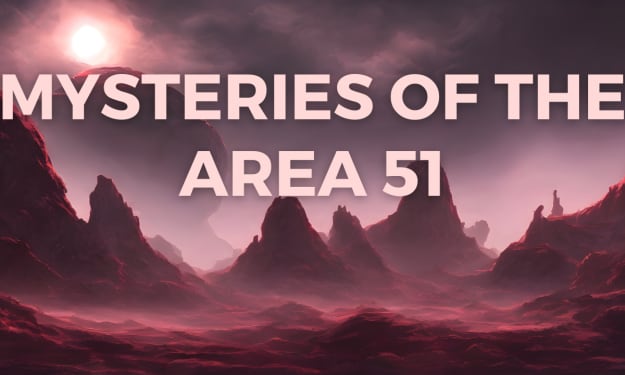The Mona Lisa Mystery | Why is it World's Most Famous Painting?
The Fascinating Journey of the Mona Lisa

Introduction:
Greetings, readers! On a vibrant Monday morning in Paris on August 21, 1911, the Louvre museum witnessed an extraordinary event that would forever alter the fate of the world's most famous painting—the Mona Lisa. As three men stealthily exited the museum, little did the world know that they were carrying not just any property but the iconic masterpiece hidden beneath a blanket. This daring heist marked the beginning of a saga that would elevate the Mona Lisa to unparalleled fame, but what secrets lay behind this enigmatic portrait?
The Genesis of the Mona Lisa:
Painted in 1503 by the polymathic genius Leonardo da Vinci, the Mona Lisa transcends its status as a mere painting. Da Vinci, an artist, engineer, scientist, sculptor, architect, and theorist, brought unparalleled depth to his creations. The Mona Lisa, his most renowned work, beckons us to unravel its mysteries.
Leonardo da Vinci: A Renaissance Man
Before delving into the enigma of Mona Lisa, it is crucial to appreciate the genius of Leonardo da Vinci himself. Born in Vinci, Italy, in 1452, da Vinci's brilliance extended far beyond the realm of art. His insatiable curiosity led him to explore diverse fields such as painting, cartography, astronomy, anatomy, botany, hydrology, geology, optics, and even paleontology. His contributions to multiple disciplines mark him as one of the greatest minds in human history.
The Identity of Mona Lisa:
Who was the enigmatic woman in the painting? Speculations about her identity have intrigued art enthusiasts for centuries. Giorgio Vasari, an Italian artist, asserted in 1550 that she was Lisa Gherardini, wife of silk trader Francesco Giocondo. This revelation gave rise to the names "Mona Lisa" (derived from Madonna Lisa) and "La Gioconda" (meaning light-hearted or cheerful in Italian).
Exploring Lisa Gherardini's Life:
To unravel the mystery further, let's delve into the life of Lisa Gherardini. Born in Florence in 1479, Lisa married Francesco Giocondo in 1495 at the age of 16. This marriage and the birth of their second son in 1502 are believed to be significant events that might have influenced da Vinci's decision to paint the Mona Lisa. Some scholars posit that the veil over Lisa's hair in the painting could be a mourning veil, symbolizing the loss of her daughter in 1499.
A Transcontinental Journey:
One might wonder: If both da Vinci and Mona Lisa were Italian, why is this iconic painting housed in the Louvre Museum in France? In 1516, King Francis I of France invited Leonardo da Vinci to live in France, marking the beginning of the painting's journey across borders. Da Vinci, in the process of perfecting the Mona Lisa, continued working on it until his death in 1519. The French king retained the painting as part of his Royal Collection, and it eventually found a permanent home in the Louvre.
Theft and Infamy:
In 1911, Vincenzo Peruggia, an Italian nationalist and Louvre employee, orchestrated the theft of the Mona Lisa, driven by the belief that it rightfully belonged in Italy. The audacious act made headlines globally, turning the painting into a symbol of intrigue. However, the subsequent recovery and return to the Louvre catapulted the Mona Lisa to unprecedented popularity.
The Mona Lisa's Peculiarities:
What makes the Mona Lisa truly special? Beyond its historical journey and theft, the painting itself possesses unique characteristics that contribute to its mystique. First and foremost, da Vinci chose to paint the Mona Lisa on poplar wood, a departure from the conventional canvas or cloth. This choice, in addition to its relatively small size (77 cm by 53 cm), adds to the painting's distinctiveness.
The Sfumato Technique:
Delving into the technical aspects, the Mona Lisa showcases da Vinci's mastery of the Sfumato technique. This method of blending colors and blurring outlines was groundbreaking in its time. The background, depicting the Arno Valley in Italy, seamlessly merges with Mona Lisa, creating an unparalleled sense of unity and depth. The deliberate absence of clear boundaries between the subject and the background contributes to the painting's timeless allure.
Unraveling the Smile:
One cannot discuss the Mona Lisa without delving into the enigma of her smile. Da Vinci dedicated considerable time and effort to perfecting this subtle yet captivating expression. His anatomical studies included dissecting human and horse faces to understand the intricacies of muscle movement. The resulting smile, central to the painting's allure, plays tricks on the viewer's perception, changing with each gaze and perspective.
The Isleworth Mona Lisa:
Controversy surrounds the existence of a second Mona Lisa, known as the Isleworth Mona Lisa. Some theorists propose that Leonardo da Vinci created two versions simultaneously, with the Isleworth Mona Lisa being an earlier experiment. Others contend that an inferior artist in Leonardo's workshop completed it.
The Ongoing Debate:
The Mona Lisa Foundation's investigation into the Isleworth Mona Lisa has reignited the debate. While some argue that da Vinci painted both versions, others maintain that the background of the Isleworth Mona Lisa may have been finished by another artist. Theories abound, but conclusive evidence remains elusive.
Mona Lisa's Legacy:
Today, the Mona Lisa remains a symbol of artistic brilliance, cultural heritage, and intrigue. Housed securely behind bulletproof glass in the Louvre, it continues to draw millions of visitors annually. Ironically, the theft of the Mona Lisa in 1911 played a pivotal role in catapulting it to global fame, transforming it from a relatively unknown masterpiece to the world's most recognized painting.
In Conclusion:
As we stand before the Mona Lisa, we stand at the intersection of art, history, and mystery. The journey of this iconic painting, from Leonardo da Vinci's workshop to the Louvre's hallowed halls, is a testament to its enduring appeal. The Mona Lisa invites us to gaze into the past, question its secrets, and marvel at the genius of a Renaissance polymath. The enigma of Mona Lisa persists, a timeless riddle waiting for each new generation to uncover its hidden truths.
About the Creator
React Wizards
Welcome to my realm – where every blog is a story waiting to be told. Subscribe and become part of a community that celebrates the beauty of words and the boundless worlds they create.
Happy reading! 📚✨






Comments
There are no comments for this story
Be the first to respond and start the conversation.